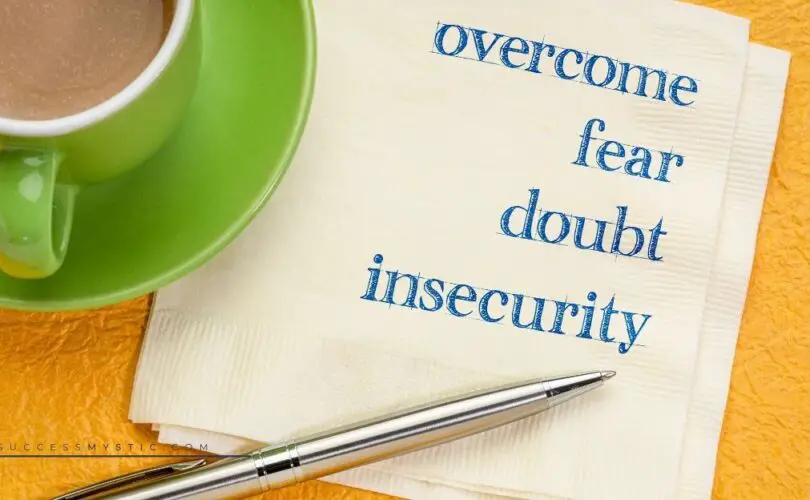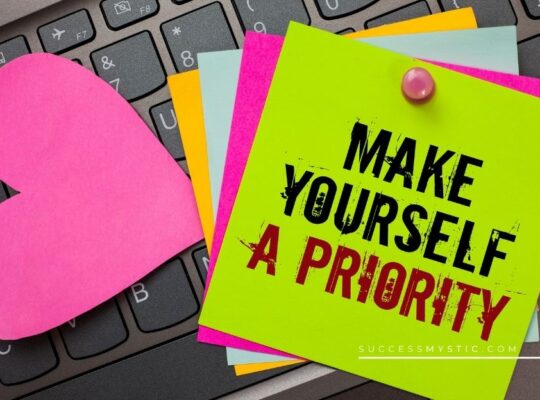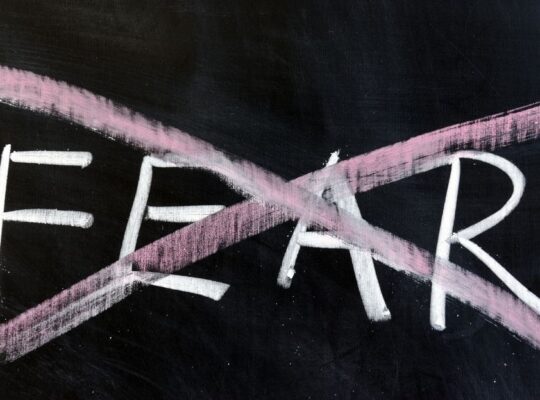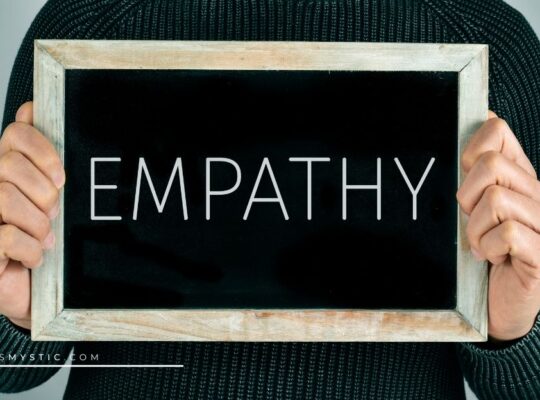Fear. A universal feeling.
Yet, it’s one we would do almost anything to avoid. We don’t want to acknowledge its existence in our lives let alone take a moment to dig into it deeper to figure out what’s going on.
How you respond to your fear, though, will determine whether you stay stuck in this rut or if you go on to achieve the goals you desire.
Once upon a time, President Franklin D. Roosevelt uttered the words, “The only thing we have to fear is fear itself.”
It’s a saying that you have likely heard your entire life, but I bet you never took a moment to think about it too deeply. There is a lot to learn from that quote and from the man himself. We can argue many of his policies and approaches, however, this was a president who led the US during the Great Depression.
At that point in time, people were rushing to the bank to withdraw all of their money. There was a crisis gripping the nation. FDR’s response was to say to the citizens of the country hey, your fear is making everything worse.
So, he took the steps necessary to close the banks for a few days. He called Congress to hold a special session to allow the country to calm down as they started to make recovery plans. FDR recognized that fear and anxiety were crippling so his approach was to acknowledge the fear, calm the situation, and take action appropriately.
That is exactly what you should do when you are faced with fear. You should acknowledge its existence, you should do your best to calm yourself, and then you can take decisive action. It sounds so easy, but here’s the problem.
The majority of us don’t know how to recognize anxiety, we have no idea we’re afraid. So, if we can barely recognize anxiety and fear, how on earth are we going to deal with them efficiently?
If you think back on a particular anxiety or fear-inducing situation that you experienced, you can probably agree that the reality of the outcome was far less traumatic than you built it up to be. This is a common refrain; humans are good at catastrophizing.
The mental images going into something tend to be much worse than the actual worst-case scenario. Even the worst-case scenario is unlikely to come true. You could have saved a lot of time and energy by dealing with it differently or sooner.
What is Fear
When you are under threat, your primal fear kicks in. It’s essentially the feeling we get when we are under threat, threatened, or under pressure. The point of fear is to protect you from harm, stemming from the ancient part of the brain that kept your ancestors safe from beasts hiding in the bushes.
That’s why fear typically comes accompanied by physical symptoms like an increased heart rate or sweaty hands. It’s fight or flight. The problem is that rarely in this day and age are we worry about hungry tigers flying into our paths. While the fight or flight syndrome was particularly helpful for our ancestors, it hasn’t quite worked out the same for us.
Fear is an ally. It will keep you safe. The problem is that rarely are those situations an actual danger to us. When you deal with excessive, prolonged stress, your fear becomes exaggerated. Low levels of anxiety over a short period of time can be healthy, it can spur you on. However, if you allow it to continue, it can take over your entire life.
We often let fear in where it need not be allowed.
- I can’t do this! What if I fail?
- I can’t take the risk! What if I lose my job?
- I can’t put myself out there! What if people call me a fool for trying?
- I can’t risk it, what if I lose my savings?
- I can’t ask, what if they say no?
- I can’t ask, what if they say yes?
Those last two are a great example of how fear can work. Two opposite reactions to the same situation, but in both fear plays its role in trying to hold you back.
A what-if is just that, it’s not reality, it’s not the event, it’s something you have imagined about the future. So, when you set out to start something new, whether it’s a brand-new project, a slight pivot, or otherwise, those pictures you imagine regarding the outcome… can completely derail you from the path you’re walking.
Constant stress or distress because of this fear and anxiety isn’t supportive, isn’t energizing, and it isn’t healthy. It’s basically like pulling the parking brake when you’re flying down the freeway. It’s going to cost you, the only question is when.
It sounds obvious now, but so many of us are living like this. It’s become the new normal. With one side racing into blind optimism and the other half crawling at a snail’s pace, paralyzed by fear, we have to find balance. You can embrace positivity while using facts to make decisions. You can embrace positivity while acknowledging and dealing with fear.
The only way fear will consume you is if you allow it to fog your thinking. If you let it go on too long, it can negatively impact your physical health. Ultimately, it isn’t the fear itself that is keeping you stuck where you are. It’s your inability to acknowledge the fear and the anxieties stemming from it. That is what keeps you trapped where you are.
What does this look like in action?
It might be that you want to take a risk, but you’ve put unreasonable limits on it. You move from a place of fear and find yourself dealing with the turbulent emotions of discomfort or humiliation.
Novelist Tom Robbins said, “Danger is to adventure what garlic is to spaghetti sauce. Without it, you just end up with stewed tomatoes.”
Fear versus Worry
When we experience worry, you’re not experiencing it in the moment. We worry about things we might need to experience in the future. We worry about the negative emotions we may one day experience and try to avoid.
Worry like that feels an awful lot like fear. Sadly, it has similar results. It leaves you feeling hesitant, you feel indecisive, it might feel tempting to hide yourself away from the world. You aren’t sure whether to put yourself out there differently or if you should hold back for fear of looking foolish.
It doesn’t really matter whether it’s worry or fear you’re dealing with because it’s all stemming from the same anxiety. It’s sapping the same mental resources, it’s draining your energy and emotional resources, too. It’s at this point you realize the only way forward is to make fear your friend.
It would be nice to do something daily that scares you, wouldn’t it? In between washing and sanitizing our hands, there are so many precautions and regulations for us to follow, fear has become a big part of our lives. We want to live comfortably, we want to be protected, but the fear that keeps you safe from catching a contagious disease is not the same as the fear keeping you in a dead-end job. The first fear is doing its job, it’s keeping you safe, and it’s keeping you alive. That is a great example of how fear can serve you appropriately.
Unfortunately, fear doesn’t always color inside the lines. It may eke out of that appropriate place and slip its fingers around other areas of your life. If you sit and watch the news, you get a dim view of the world we live in. There is plenty of danger all over the place, but in reality, the world is safer now than it has been at any other point in history. You will likely lead a long and happy life.
That, of course, comes with a catch.
The catch is that if you want to find true happiness you will need to find a way to overcome fear. There is no benefit to always feeling safe. There is no growth in remaining comfortable. If you want to be a one-sided human being, then fine stick with the comfort. If you want to develop and grow as a person? Then it’s time to get better acquainted with fear.
There is not one person on this planet who will escape death. It’s the only exit from life. So, by hiding yourself away to protect you, you only accomplish living a sheltered life. You have hidden yourself from danger, sure, but you have also hidden yourself from adventure. You can be cautious without being complacent.
If the eyes are the windows to the soul, then fear is a portal to personal development. Where fear is present, power is there also. Where power is present, there you will find growth.
The Faces of Fear
Let’s look at fear from a different perspective. It happens between what you know and what you don’t. It happens between your future and your past. Because fear comes with two faces. It’s the balance of light and shadow and internal and external.
First, understand fear exists between your body and your mind. That is where fear truly exists. The first key to facing your fear is to understand that it only exists between your body and your mind.
As an example, I want you to imagine yourself at a border crossing. You are trying to gain entry to Syria after a time in Iraq. Everyone who heads to the Middle East knows you need a fixer, a fixer who will take you where you want to go and make your passages go smoothly. At every checkpoint, your fixer reminds you how to behave.
Here you are, passport in hand, ready to cross the border. A member of the border security force takes notice of you, making a beeline for you, shouting at you in Arabic. You do not understand a word, all you notice is the gun slung over his shoulder and the eyes of everyone on the two of you. His attention has managed to draw other officers toward you.
Now there are four men hanging over you, shouting, demanding answers for questions you don’t understand. In your peripheral vision, you recognize their comrades laughing as they watch. That’s when you realize fear has gotten the best of you. You maintain eye contact with the initial man, breathe through your fear, cover your emotion, and allow yourself to feel, acknowledge, and befriend your fear.
You pass safely and securely, after offering some cheap cigarettes to speed things up.
You were more terrified than you have ever been in your entire life. No wonder, anyone would be scared. The only thing you had to do in this position was look fear in the face (and cough up those cigarettes).
You felt as though you were in danger, and at many borders, you might have been, but there was no real danger that day. They were just having fun and showing off for their friends. You didn’t know that, of course, but by making fear your friend you walked away the winner.
Physical Fear
We briefly touched on the physical response that comes with the body kicking into fight or flight mode. However, before we continue, let’s take a moment to dig a little deeper into that physical response. It works just like it did for your ancestors. Only, as we mentioned before, your ancestors were facing animals who would gobble them up for a light snack.
Fear kicks in. It triggers your limbic system’s stress response. This is the deep area of your brain in charge of memories and emotions, along with a slew of hormones and neurotransmitters. Some of which include adrenaline and cortisol. As they course through your bloodstream it spikes your blood sugar, boosts your heart rate, affects your breathing, and even changes your immune system! That’s what results in fear, the feeling of fear as we know it anyway. If you want to get into medical terms, this is simply your body’s stress response. Fear is psychological which means it exists only within your mind.
Science suggests that what we count as fear is really just the stress hormone cortisol over-saturating your system. If this is a chronic issue, it can have long-term adverse health effects.
As noted above, the limbic system is also in charge of your memories. So, the memories you store with an association of fear simply creates a vicious cycle. You have stores, thoughts, images, and other memories stored away and touched by irrational feelings!
While we plan to offer a variety of tips and advice on how you can befriend your fear later, I’d like to touch on some helpful practices now.
- Recognize your stress
- Regulate your breathing
- Practice detachment
- Practice yoga, meditation, or exercise daily.
Fear doesn’t exist. Not truly. And you are fully capable of being strong enough to befriend fear to overcome it. Let’s start now, by recognizing that all fear is, is a mirror. When you look into it you see your deepest weaknesses, your most profound wounds, and your darkest shadows. When you choose to confront and befriend your fears, you are actively choosing to learn more about yourself in order to develop and grow.
Make Fear Your Friend
Own It
Fear does have an important job to play. It’s what makes you look both ways before you cross the road lest you get hit by a bus. It helps you avoid making stupid decisions like getting a romantic interest’s name tattooed on your person.
The problem is when we allow fear to distort our perspective. Fear shouldn’t be insurmountable. It shouldn’t be an obstacle that prevents you from reaching the end of the line. If you allow yourself to feel fear unquestioningly, it will take over. If, however, you take a step back and acknowledge that it’s part of your process, and you carry on despite the fear… then you make it your friend and overcome it to develop as a person.
The time you spent indulging your fears, is time spent procrastinating. It’s time that you could have used more wisely, like to build yourself up to do whatever it is you decided you’re afraid to do. Rehearse, prepare, pump yourself up, and perform when the time comes! That’s what you should do with the time you spend in fear.
Use It
Fear can be more than just a friend, it can be a motivational tool like the best friends. Stare into the abyss. Of what life would look like if your fears came true. Let that be your motivator to create an action plan that ensures you avoid both the fear and its reality. From here on out, every day because an opportunity for you to make positive decisions that will lead you to a healthier, more fulfilling life.
Think about it like this. We touched on the physical manifestation of fear and what it feels like in your body when all of that cortisol kicks in. Guess what? When you’re excited, you experience many of those same physical responses – your blood pressure spikes, adrenaline comes rushing through your body, and you find yourself hyper-focused.
So, I encourage you to change your perception. Instead of viewing it as fear, why don’t you flip the script and start thinking about it as excitement instead? Affirm yourself. This isn’t to be endured, it’s to be enjoyed.
Move Beyond It
Are you familiar with confirmation bias? The thing we do when we want to confirm our existing idea, whether unconsciously or consciously? It encourages us to seek out information that will provide us with evidence of what we already think or believe. It’s blinding. It can make it incredibly difficult to find alternative solutions or explanations, which only serves to rob us of our ability to see the big picture.
If you’d like to make fear your friend and move beyond it, then try challenging your confirmation bias. When you notice you’re feeling fear, reflect on whether that fear is accurate or an old belief that came from external sources.
As an example, I’d like you to imagine that you have a big presentation coming up. You will have to stand in front of a room full of people and present the sales pitch of your life. You are terrified because it takes you right back to your 13-year-old self standing in front of your class badly flubbing an oral book report.
You remember the sweat dripping from your forehand and landing on the paper below, smudging just enough of the ink to make the words illegible. Your classmates laughed at you, for what felt like hours before the teacher got them under control.
You felt humiliated. Even though you’re a professional who has moved long beyond that moment, that moment has touched this moment. You have allowed fear to go unchallenged and the idea that this could end in humiliation has left you unable to focus. If you let this continue you will simply fuel self-fulfilling prophecies for the rest of your life. Instead, you could harness the power of that fear to give your best performance.
Make Fear Your Ally
It isn’t enough to befriend fear, you must take the next step and make it your ally. If you want to change the game, then fear can help you do that. Just by recognizing fear when it rears its ugly head and finding a way to move forward is life changing. It’s empowering. Let’s take a look at some of the different ways fear may present itself in your life.
The Extreme
In the majority of cases, the fear you feel is rarely as bad in reality as it was in your imagination. Your mind wants to keep you safe as you try something new, step into the unknown, or face a big decision. That might mean that your mind encourages you to avoid change, even if there is no real danger or the fear no longer serves you or simply holds you back.
The thing about change is you never know what’s coming next. The unknown is scary, yes, but change happens so often in this life you cannot afford to be afraid of it every time. When you feel fear due to change or opportunity, break it down into actionable parts and begin with smaller steps. As long as you keep moving forward.
The Signal
If you feel as though you’re constantly stressed out and afraid, your body is trying to tell you there’s something bigger going on. It’s time to take a break! If you find daily life overwhelming, then your mind, body (and spirit) are in need of a vacation. Take a day, the weekend, a week, or even longer if you can and give yourself a proper break.
Better yet, I’d like you to commit to searching out new ways to renew and replenish your mind, body, and spirit. You can manage both your time and energy more effectively, to ensure you never reach this point again.
The Growth
In some cases, fear is altering you to risk. Often, though, when you look at things more closely you realize that it is on the other side where the greatest opportunities can be found. You have to find the strength to act into your fear. You have to lean into discomfort. It’s empowering and it’s freeing, but that doesn’t mean it’s easy.
Clarity rarely comes from thinking about doing, it generally comes from doing, or at the very least through engaging. Remember, you can adjust, shift, or even reverse if you find yourself taking the wrong action.
When faced with new things, it’s natural to deal with fear, especially when you want to grow beyond your current limitations and overcome the boundaries in your way. Instead of seeing fear as your enemy, shift your perspective to view it as the ally who will bridge the gap rather than blocking your path.
The Practice
I’m going to use a common fear as an example here. A lot of people have a fear of failing. But you probably also know a dozen (or more) people who have failed throughout their lives and still managed to find success. Right? It seems like a fair fear to have.
How many of us fear failure because we have failed? Well, we’ve all failed because we’re only human. How do you react to failure? That’s the big question. Because if you’re afraid to act because you’re afraid to fail how have you made it this far in life?
Look, you’ve failed before and here you still stand. It doesn’t feel great, but it’s something you can bounce back from. It feels awful, but you didn’t die! It’s a temporary setback, a fleeting feeling, and you can use it to your advantage.
You should be able to confidently say that when you mess up, or when you fail, that it’s not that bad. You can get back up and try it again, but this time you have plenty of lessons to carry with you.
Imagine yourself tackling your fear – you’re making the speech, you’re publishing your book, you’re starting the business, etc. Imagine yourself doing every step and imagine yourself dealing with the different scenarios that could play out. Imagine yourself laughing at your mistakes as you correct them and succeed. Allow yourself the space to experience the worst-case scenario so that you can get greater control over it.
From here on out, you might just find it’s a lot easier to get in touch with the likely outcome and move beyond your limitations and boundaries.
The Friend
Everyone will deal with the occasional feeling of fear or anxiety throughout their lives. This isn’t about eliminating fear because that would be an unhealthy response to it. Eliminating fear would not be beneficial to you. Some fear is necessary, healthy even, because it’s always wise to remain alert and aware, whether you’re walking alone through the woods or starting a new business.
However, too much fear for too long is taxing on your body, mind, and spirit. It’s like living in overdrive constantly. It’s draining and it’s sapping your resources. It makes it far more difficult to make decisions because you ignore or miss red flags or you’re too stressed out to focus on the details. When fear appears, be willing to acknowledge it and learn from it.
You can breathe through it, walk it out, or whatever. Calm yourself down and ask your inner voice for guidance as you look to make the best decision and move in the right direction.
Final Thoughts
If I offered to remove 15% of your fear right now, how different would your life be? How different would your work be? How different would you be? I can’t offer you this because I’m not a genie hiding in a lamp. Don’t worry, though, because you have the power to reduce your fear all by yourself! If fear has stopped you from chasing a dream. If fear has prevented you from moving forward, then it’s time to stop it in its tracks and befriend it.
How can you embrace fear in your life? How can you use it as an ally to move forward? How can you utilize fear to do what you want to do, whether it’s a difficult conversation, business-building action, or a major project on the horizon?
You will find empowerment directly on the other side of fear. If you’re looking for the most powerful gateway to learn about yourself and develop as a person, then facing your fear is the way to do it. Fear is a teacher and facing it will leave you a stronger person.
Now, the only thing left to do is get a firmer understanding of where all of your fears come from so that you can determine where the fears have come from and what it will take for you to befriend them. People often talk about courage. Somewhere along the line we have convinced ourselves that courage is the absence of fear. The reality is very different. In actuality, courage is the ability to take action even when looking at fear face-first.
So, if you want to develop personal growth and you want to achieve success if you want to find happiness and pursue the life you have dreamed about… then, the first step to doing so is to make fear your friend. In fear, you have an ally that can drive you to be courageous in the face of adversity.
In fear, you have a friend who can push you to greatness where it once held you back. Once you deal with fear, the only thing standing in the way is… well, guess what? Nothing is standing in your way now.







